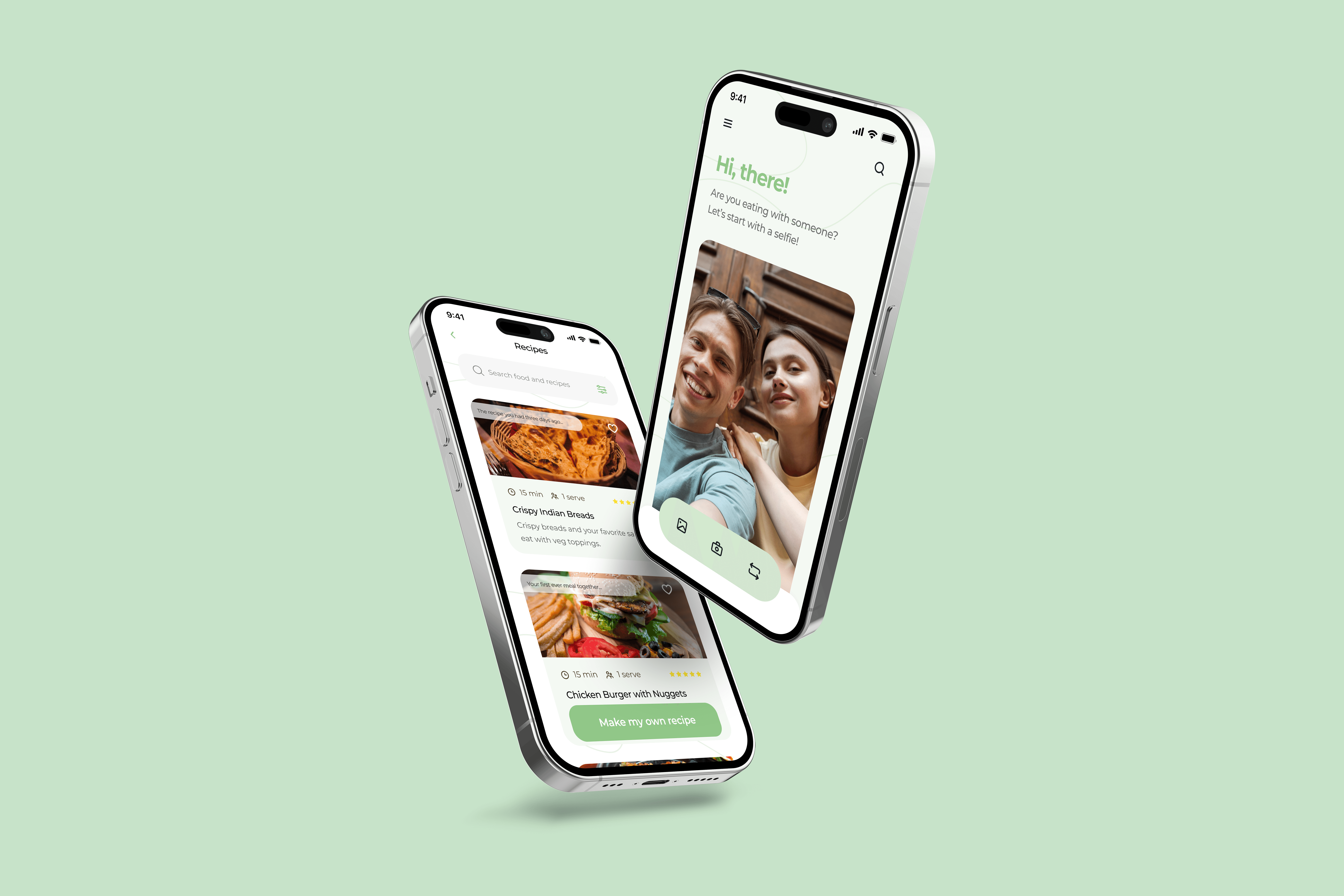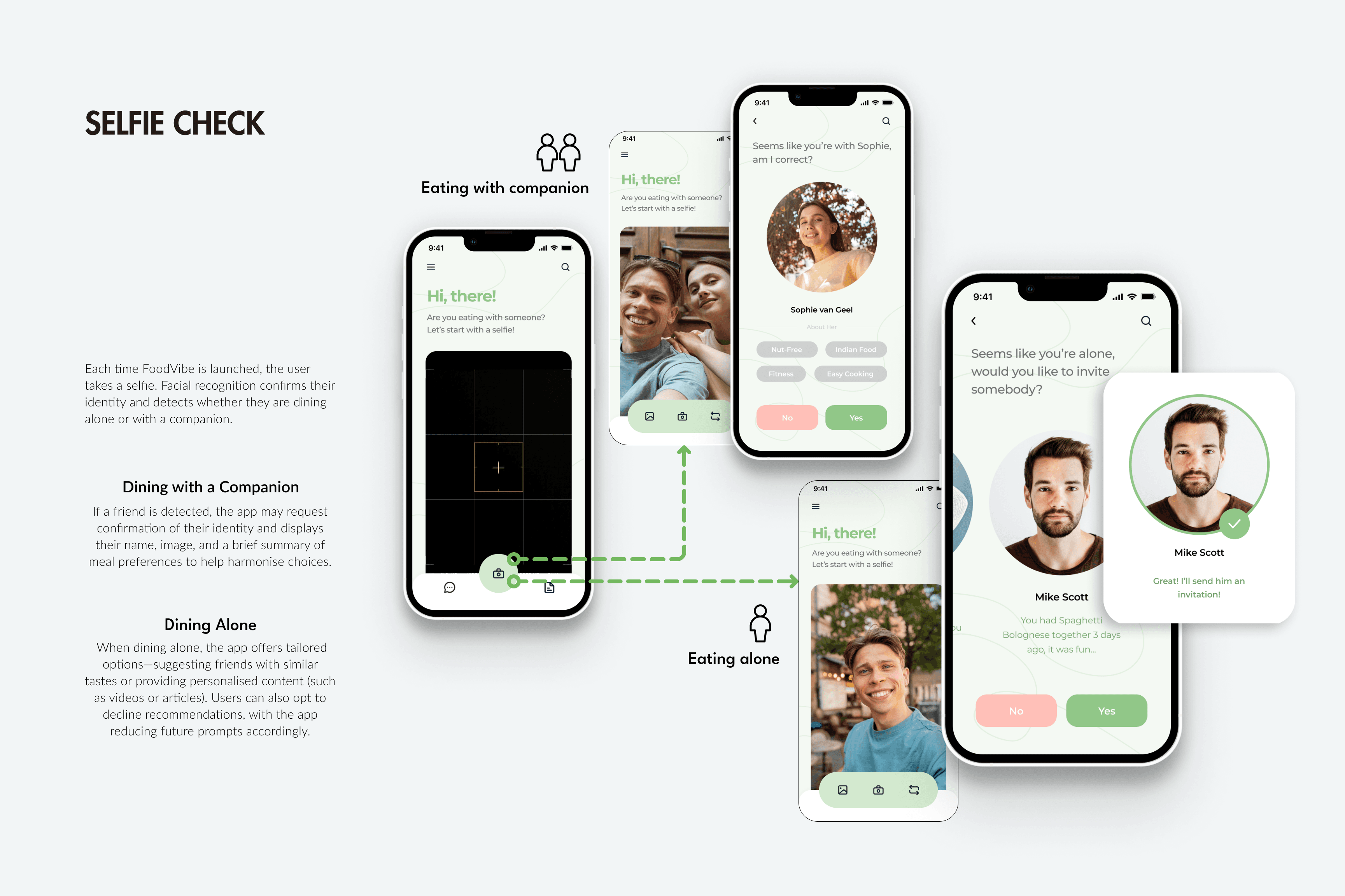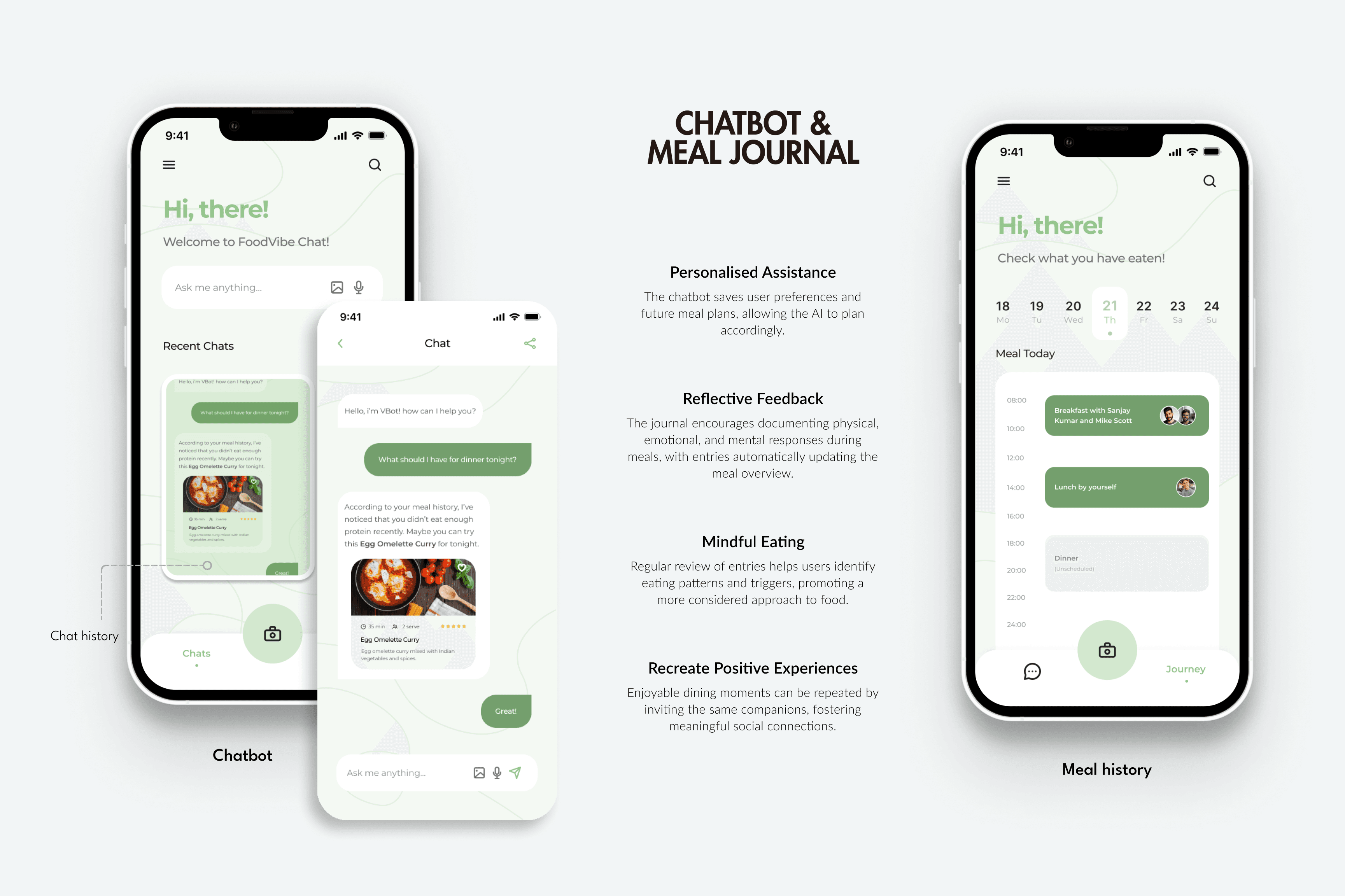
FoodVibe
Positive Eating: Fostering Wellbeing in Healthy Eating Experiences Supported by AI-Driven Systems
Client
Delft Institute of Positive Design
Industry
Wellness
Duration
03/2023- 08/2023
My Role
Product Designer
For my graduation project, Foodvibe, I tackled the challenge of embedding wellbeing into AI-driven systems - a gap identified in “A Human-Centered Design Method for Positive AI” (van der Maden, 2023). Tasked with designing interventions for healthy eating experiences, I evolved the preliminary Positive AI Design Method to identify and measure wellbeing aspects by linking established theories with existing services and iterating through user testing. As the product designer, I created a tangible service system that empowers users to enjoy mindful, healthy eating and marks a pioneering step in using AI for user-centric design to enhance daily life.
FoodVibe is an app which harnesses AI power to facilitate more mindful and personal home-dining experiences.
It encourages better wellbeing by bringing people together for more joyful meal experiences, and then reflecting on them. It continuously learns from past experiences and gives new recommendations for future experiences. By understanding the types of meals a user enjoys, and with whom, it can make recommendations for the future which increase different aspects of wellbeing.
Keywords
Product UX/UI Design | Design for Wellness | AI-Driven
What is "healthy eating"? Is it simply the intake of correct quantities of nutrients, regardless of how and where? This project aimed to improve wellbeing in the context of eating experiences. Many apps focus overly on weight loss and other physical metrics, but health is much broader - including psychological aspects. AI as of today has failed to make progress on improving this type of issue, despite being more powerful than ever. Positive AI builds on the framework of Positive Design in order to do this, and this project produced a tangible example of how this can be done.
The design approach is based on the Positive AI Design Method, specifically tailored to reshape a healthy eating platform using AI technology. It follows a user-centred process in four stages, with iterative cycles ensuring continuous refinement and alignment with users’ evolving wellbeing goals.
Following this method enables me to design AI-driven digital solutions in a structured way while ensuring they remain user-centred and aligned with evolving wellbeing needs.
The final design - FoodVibe - is an app which facilitates more mindful and personal home-dining experiences. The name is a play on “good vibes”, which gives a feeling for what the app is all about. By taking into account preferences, past feelings, and behaviour trends, the app recommends changes - such as new meals, more suitable methods, or partners - and lets users reflect on these for future improvement. FoodVibe encourages more joyful experiences with friends and family by utilising AI to increase factors contributing to wellbeing, based on the past reflections. Users can selfreport on their experiences in a number of ways, and the app considers everything for the next time. For example, it recommends recipes based on who you are with and what is likely to please everyone, and recognises when you might want to invite someone to join you. The intuitive interface makes using the app on a daily basis unobtrusive and overwhelmingly positive in its effects. All along, users maintain autonomy by not being restricted whatsoever. They can still choose to eat whatever and with whomever they wish, and FoodVibe will consider their reflections nonetheless.
Transforming Healthy Dieting into a Joyful Dining Experience: FoodVibe’s Impact and Future Endeavors
FoodVibe - a personalised recipe and holistic experience recommendation app - has been successfully introduced and evaluated. Its core function, which suggests daily recipes tailored to specific social occasions, is designed to enhance positive relationships while ensuring users retain full autonomy. Extensive quantitative and qualitative testing confirmed that the design meets its goals, with feedback indicating that the app inspires joyful and reflective dining experiences. Moreover, my iterative design process has paved the way for further improvements, such as replacing mandatory selfie-based facial recognition with an avatar system to better address privacy concerns. This project underscores the importance of ethical, user-centric design in wellbeing applications.







